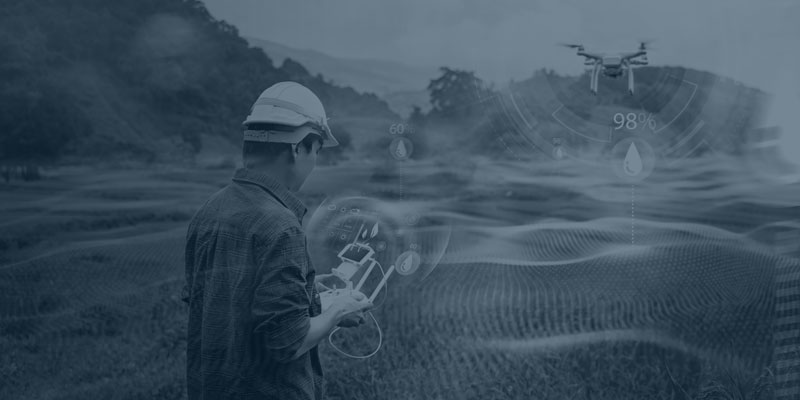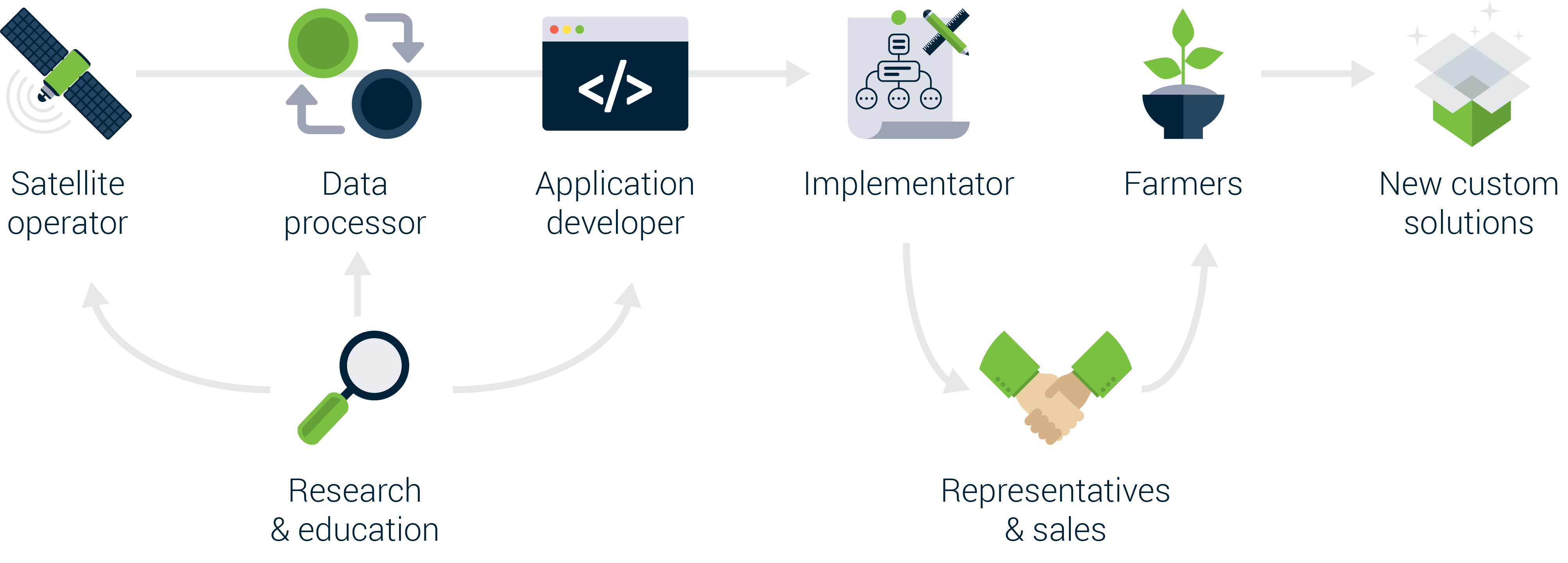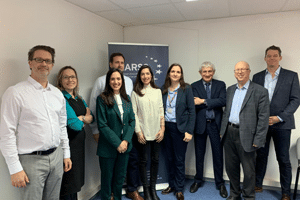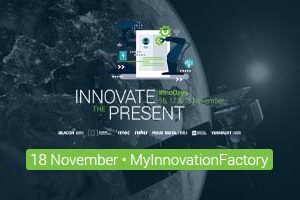Climate change, new machinery, changes in legislation, crop variety, increasing yield, growing field sizes and scientific discoveries, they’re all obstacles for the agricultural industry. New information and insights will enable the sector to better assess, plan and observe crop production, and overcome these challenges.

There’s an endless amount of opportunities in earth observation. How can it innovate your company? In this series we’ll look into specific opportunities for different markets. First up: agriculture!
Earth observation is the gathering of information about the Earth’s physical, chemical and biological systems via remote sensing technologies. These technologies usually involve satellites carrying imaging devices. EO is used to monitor and assess the status of, and changes in, the natural and human environment. Through the FIRE forum project, Verhaert set up workshops with different industry experts to see how these existing and evolving data can assist in reaching companies ambitions as well as the European Climate Goals.
Real-time crop insights
By collecting and combining data from local, real-time sources (from connected sensors on the ground) and EO data, the industry could generate a valuable data flow. This data can measure vegetation growth, water, air, nutrients, allowing farmers to learn from and respond to better prediction models. A good example of this is pesticide restrictions: after the new legislation, farmers had to change in pest and disease control. EO could bridge the gap between on the ground input and create more crop control.

Need for ready-to-use tools
While remote sensing technologies are slowly becoming more precise, the EO data value chain needs not adapted to better meet the needs of farmers, suppliers and other stakeholders. The currently too raw, hyperspectral, ‘scientific’ images and data need to be converted to standardized, intuitive, ready-to-use tools and interfaces.
Exactly this is already being organized through open innovation with industry experts, end users, researchers and start-ups. By defining the shared objectives and goals, the most compelling needs can be addressed, for both application and tools, as software and user interfaces. Through focused and organized transformation, we can make this transition.
Increasing the success rate
To increase the chances of success of earth observation or farming software providers, the suppliers should consider the following:
- Create tools that are easy to consult, avoid additional knowledge or skills to use EO data,
- Make sure EO data products are easy to integrate with existing infrastructure like farming equipment,
- Develop better, customized tools for planning and resource management,
- “Seeing is believing”: create fact-based operations and policies (including damage assessment, food transparency, etc.),
- Increase the amount of data available for improved forecasting quality and environmental assessment,
- Consider the opportunities of optimized imagery resolution, as it offers more options for agriculture in the future.
In conclusion, the historically experience-based agriculture industry could greatly benefit from EO. It allows farmers, seed providers and other stakeholders to approach crop production in a more reliable data-based approach. Although there are still some challenges in making this data available, early adopters, innovators and start-ups are already developing applications to bridge this gap.
Discover the already existing agricultural solutions from our Copernicus Incubation start-ups.
Visit CASSINI Hackathons for EO funding opportunities.





